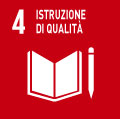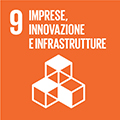- Docente: Alberto Fregni
- Crediti formativi: 9
- SSD: ING-IND/22
- Lingua di insegnamento: Inglese
- Moduli: Giulia Guidotti (Modulo 1) Alberto Fregni (Modulo 2)
- Modalità didattica: Convenzionale - Lezioni in presenza (Modulo 1) Convenzionale - Lezioni in presenza (Modulo 2)
- Campus: Ravenna
- Corso: Laurea in Building Construction Engineering (cod. 5897)
-
Orario delle lezioni (Modulo 1)
dal 17/09/2024 al 13/12/2024
-
Orario delle lezioni (Modulo 2)
dal 17/09/2024 al 17/12/2024
Conoscenze e abilità da conseguire
During the course, the basic principles of chemistry and stoichiometry, the chemical and structural+ characteristics of matter and the energetic aspects of chemical transformations will be illustrated. Moreover, the course provides the tools for evaluating and selecting the materials to be used in buildings: students will learn the main chemical, physical and mechanical properties of most used building materials, as well as their technical characteristic and durability in different working environments.
Contenuti
Chemistry unit (40 h)
Atomic structure of matter.
Electronic structure of atoms and periodicity of atomic properties
Chemical bonds: ionic, covalent and metallic bonds. Weak interactions.
Stoichiometry, chemical reactions and redox.
Nomenclature of inorganic compounds
States of matter: gases, ideal gas law, mixture of gases and real gases. Liquid state: solutions and measures of concentration. Solids: kinds of crystals. Structures and properties of ionic, molecular, covalent and metallic solids.
Thermochemistry: Hess's Law of heat.
Ionic equilibria in aqueous solutions. Acids and bases. pH determination.
Material Science unit (50 h)
Introduction to Materials Science.
Physical-mechanical performances of materials: stress-strain diagram, Young modulus, elastic and plastic strain, fracture, creep, fatigue.
Ceramic materials: Raw materials, production technology, mechanical properties and performance. Bricks, ceramic tiles
Binders: Hydraulic and non-hydraulic binders: gypsum, lime, Portland cement. Types of cement according to the EN 197-1 standard. Mechanical performances of the cement according to the EN 196-1 standard.
Concrete: main components, mix design, properties of fresh and hardened-state concrete. Tests on fresh concrete in building site, characteristic compressive strength (Rck).
Generalities on condensed phase equilibria: two-component state diagrams. Characteristics of eutectic alloys.
Metals: Cast iron raw materials and production technology, Steel production technology, Fe-C state diagram, thermal treatment of steels, stainless steels.
Testi/Bibliografia
Chemistry unit
R. Chang. Chenistry. McGraw Hill
Material Science unit
W. D. Callister, D. G. Rethwisch – Materials Science and Engineering 8° Ed. – Ed. Wiley
M. Soutsos, P. Domone (Editors)- Construction Materials: Their Nature and Behaviour - 5th edition - CRC Press;
Metodi didattici
Frontal teaching.
During the lessons will be carried out exercises of the same type and difficulty than those that will be submitted to the students during the exams.
Modalità di verifica e valutazione dell'apprendimento
The examination is divided into two separate verification tests: one of chemistry and one of materials technology.
The Chemistry exam takes place through a 90-minute written test with multiple choice questions, open questions and numerical exercises.
The Materials Technology exam takes place through a 90-minute written test, structured in two open questions, five multiple choice questions and a numerical exercise.
Both exams will focus on the main topics of the lesson
During the verification test, the use of books, notes and any type of electronic device (smartphone, tablet or similar) is not allowed.
The overall result, achieved if both the chemistry and materials technology tests result at least sufficient, will be the average of the results obtained in the two tests.
Although it is strongly recommended that the two tests are carried out in the shortest possible time, there is no time limit to complete the examination in its two parts.
Strumenti a supporto della didattica
The slides projected during the lessons will be available online on the Virtual platform.
For a better use of the lessons, the slides should be printed and taken to the classroom.
Take care: the slides provided, even if supplemented by the notes taken in class, do not replace the reference texts.
Orario di ricevimento
Consulta il sito web di Alberto Fregni
Consulta il sito web di Giulia Guidotti
SDGs




L'insegnamento contribuisce al perseguimento degli Obiettivi di Sviluppo Sostenibile dell'Agenda 2030 dell'ONU.
